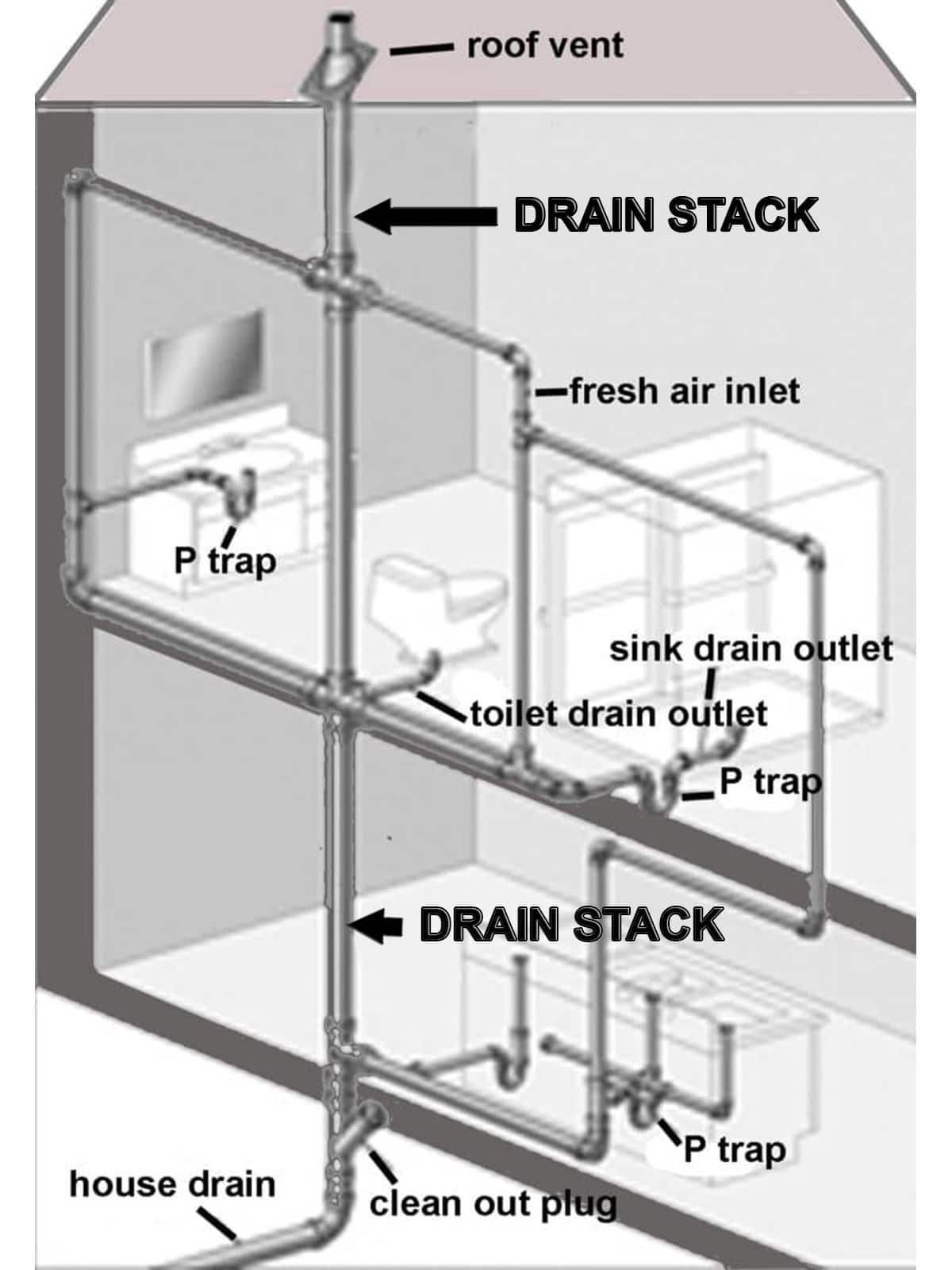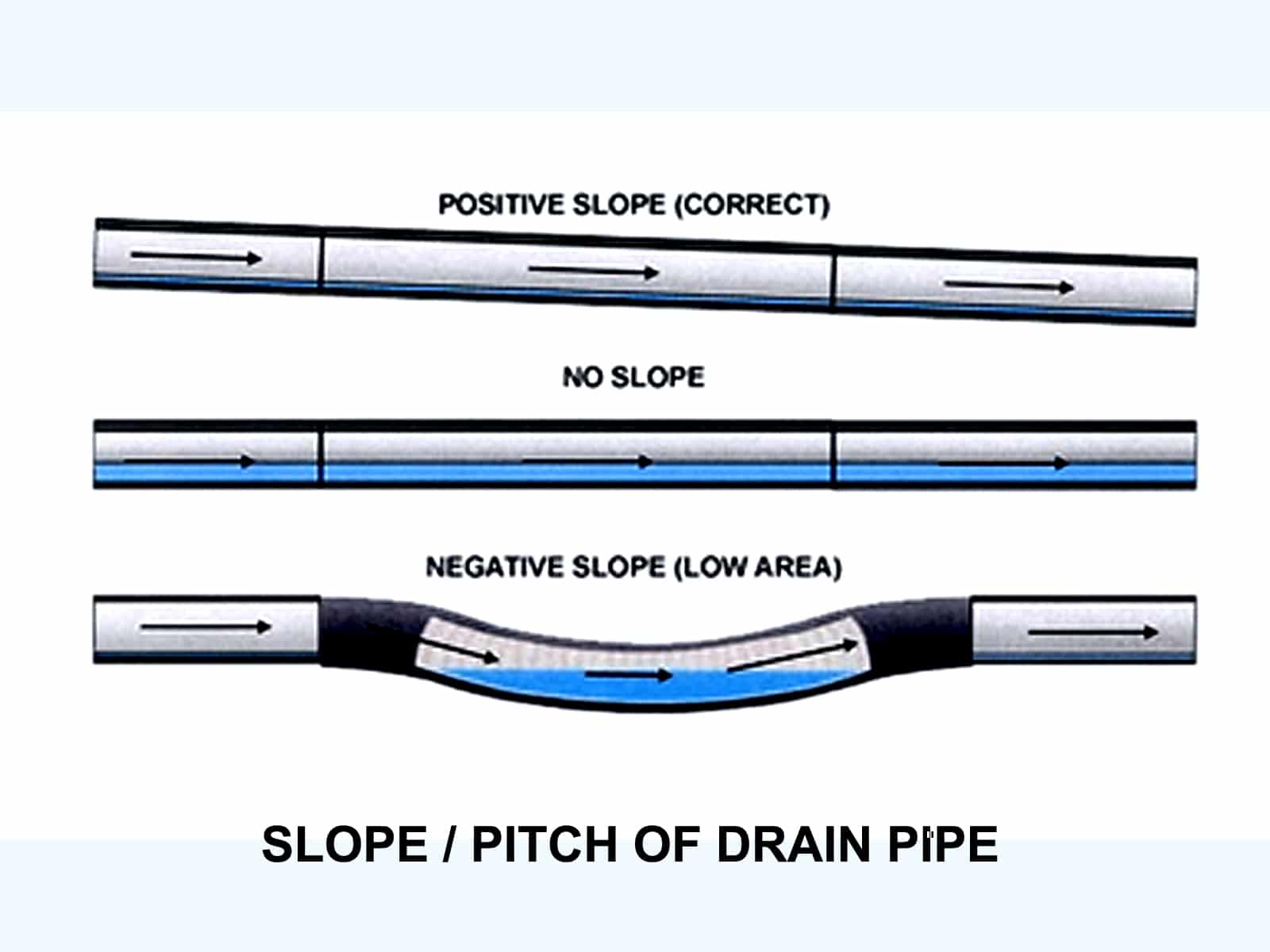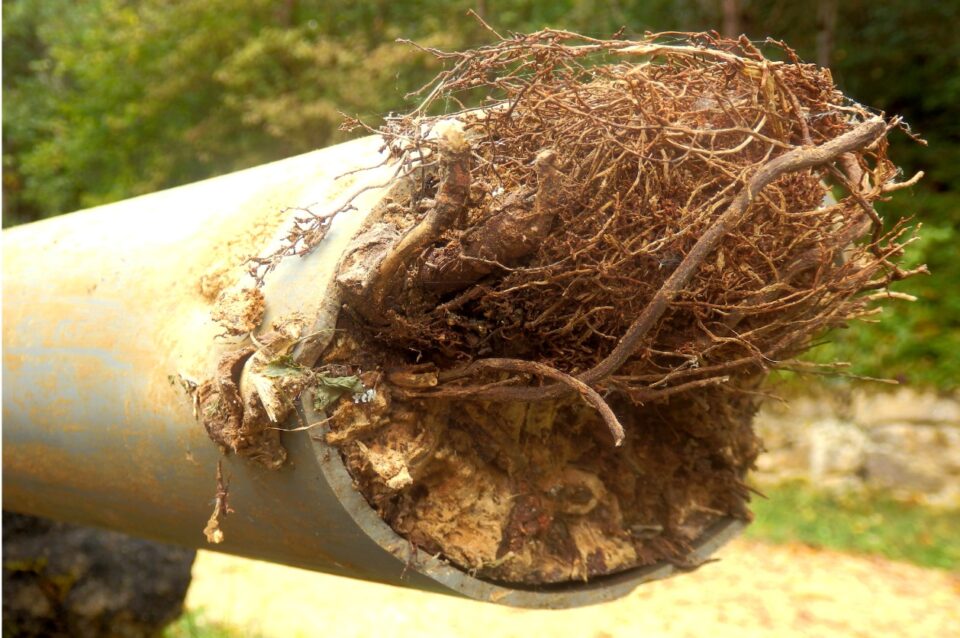Do you know what is a plumbing stack, what it does, or how it works? How do you know when a sewer stack needs to be cleaned or repaired? What are the signs that it is not working properly, or that it’s clogged up? How can you clear a clog in your sewer drain stack, and what are some tips for preventing clogs in the first place?
Unless you’ve had to deal with a clogged stack, you may not know the answers to these questions. This guide is going to teach you everything that you need to know about your sewer stack, and how to maintain it properly. We’ll start by explaining just what it is and how it works.
What is a Sewer Stack?
Your home’s sewer stack is an essential part of your plumbing system. One of its purposes is to remove all of the sewage from your home, including those that run up through each floor, and connect to toilets, sinks, and showers. It also releases sewer gases back into the atmosphere, instead of letting them linger in your home.
Where are Drain Stacks Located?
Your drain is typically located in your basement, but it can also be found outside of your home. This location varies depending on the construction style of your home, as well as the design of your plumbing system.
Your home’s fixtures are all connected to the stack via branch drain lines. Each time you flush your toilet, take a shower, or wash your hands, the water and waste flow through the drains and into the stack. Eventually, this goes to your main sewage line, which leads to your city’s main sewer or septic tank. A vent pipe also connects to the sewer stack, which helps release the gases into the air.
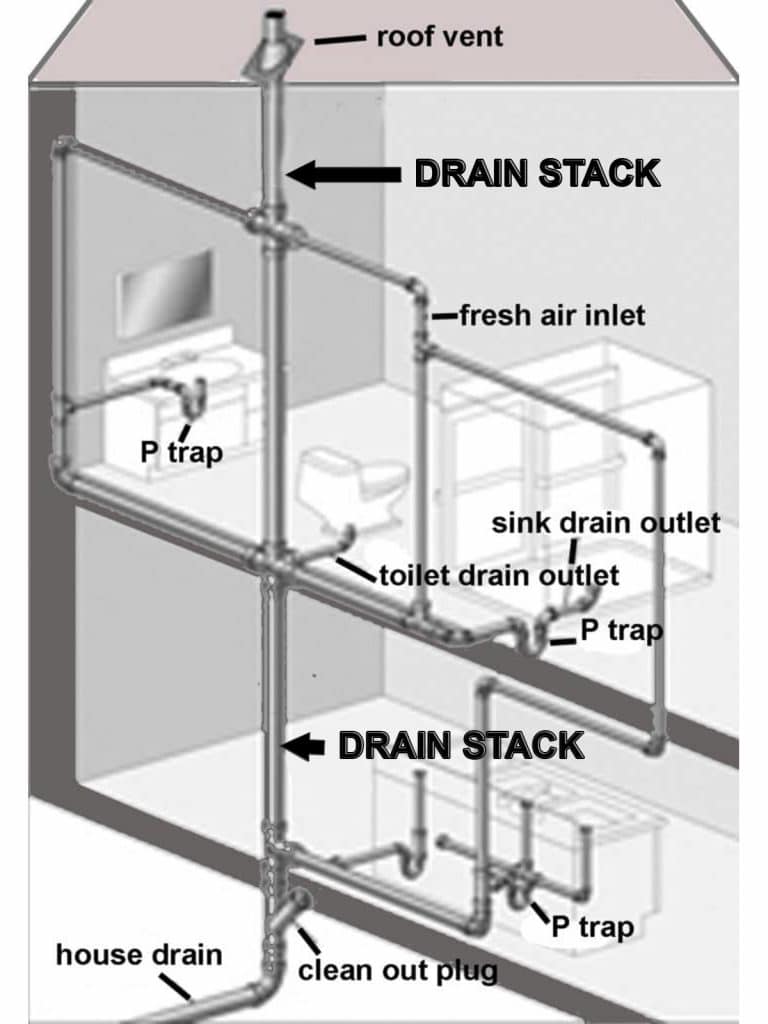
Can a Stack Get Clogged and Issues With Plumbing Stacks?
Yes, a sewer stack can become clogged, usually due to the buildup of waste and other debris within the system. What can cause it to become clogged? There are a few different things that cause it:
Fats, Oils, and Grease. When you wash dishes or cook, fats, oils, and grease can go down the drain. Over time, these substances can solidify and adhere to the sides, causing a blockage.
Hair. When you take a shower or wash your hair, hair can go down the drain and into the main drain line stack. This can cause a clog, especially if there is a lot of hair.
Soap Scum. Soap can also build up and cause clogs, especially if you have hard water.
Paper Products. Paper towels, toilet paper, and even feminine hygiene products can also cause clogs.
Toys and Other Objects. Sometimes, kids will flush toys or other objects down the toilet. If they don’t make it all the way to the main sewer line, they can become stuck and cause a clog.
Yard Root Growth. If there are trees or other plants growing near your outside drain line stack, their roots can grow and cause a blockage.
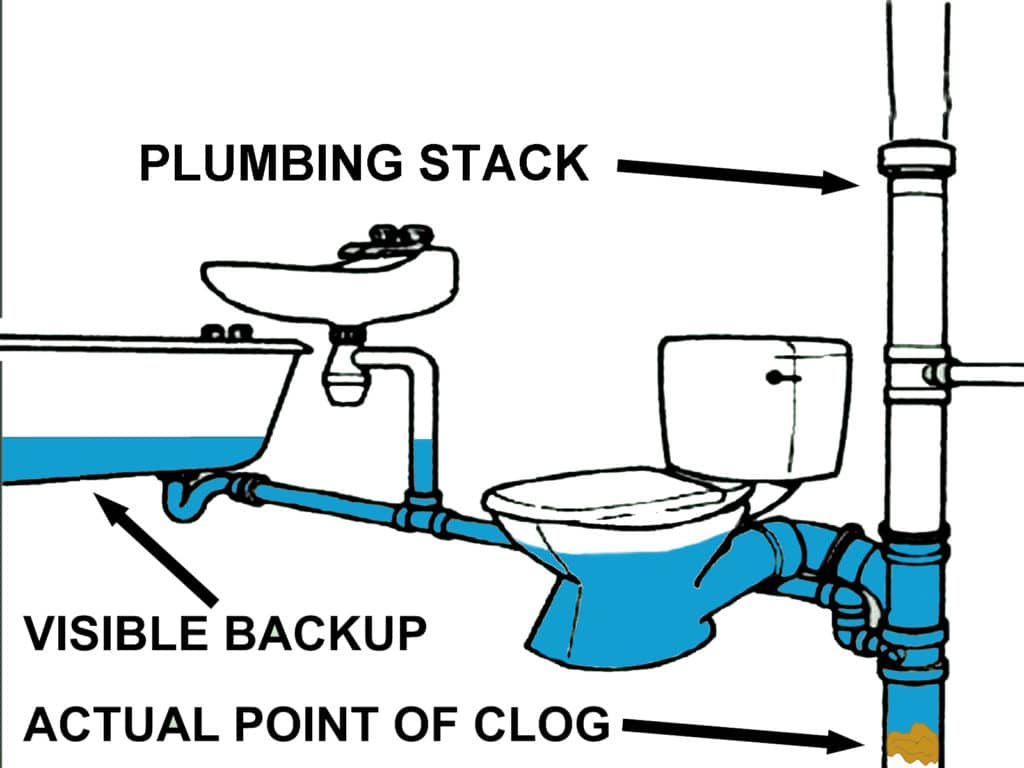
Key Signs a Sewer Stack is Not Working Properly
A drain stack is connected to your home’s plumbing system at both ends – it also connects to each fixture in your home. A stack typically extends through the roof of the building and also connects to the main house drain, which then connects to the house sewer line.
Therefore, a variety of problems can arise when this is not working properly. A few common signs that it is not working properly include:
Bad Smells. If your sewer stack is not draining properly, sewage can back up into your home and cause an unpleasant smell.
Gurgling Noises. If it is clogged, it will not be able to properly drain liquids away from your home. This can lead to gurgling noises coming from your drains and toilets because the excess liquid can’t flow out of your home.
Slow Drainage: Slow drainage is another common sign of a clog. When you flush the toilet or run water down the drain, it should go down quickly. If you notice that it’s draining much slower than usual, this could be due to a clog.
How Do You Clean Out a Clogged Drain or Sewer Stack?
Have you noticed that your drains are draining more slowly than usual? Then it could be a sign that there is a blockage in your sewer stack. If you have more than one drain that is draining slowly, it’s more likely that the issue is with your stack line.
One of the things you can do to try to clear the blockage yourself is to pour boiling water down your drains. Boiling water can help to break up fats, oils, and grease that adhere to the sides. A plumbing snake can also clean out a clogged drain or sewer stack. It is a long, flexible piece of equipment that can help to reach deep into your sewer stack and break up a clog.
Should You Have it Repaired or Replaced?
If you’ve tried to clear a clog in your sewer stack and have not been successful, or if the problem keeps occurring frequently, it’s time to call a professional.
A professional will be able to assess the situation and determine whether you need a repair or a replacement. In many cases, a repair will take care of the immediate problem but may not prevent future problems from occurring. A replacement is a more permanent solution. Once you have your sewer stack replaced, you should be able to enjoy years of reliable plumbing without any clogs or other issues.
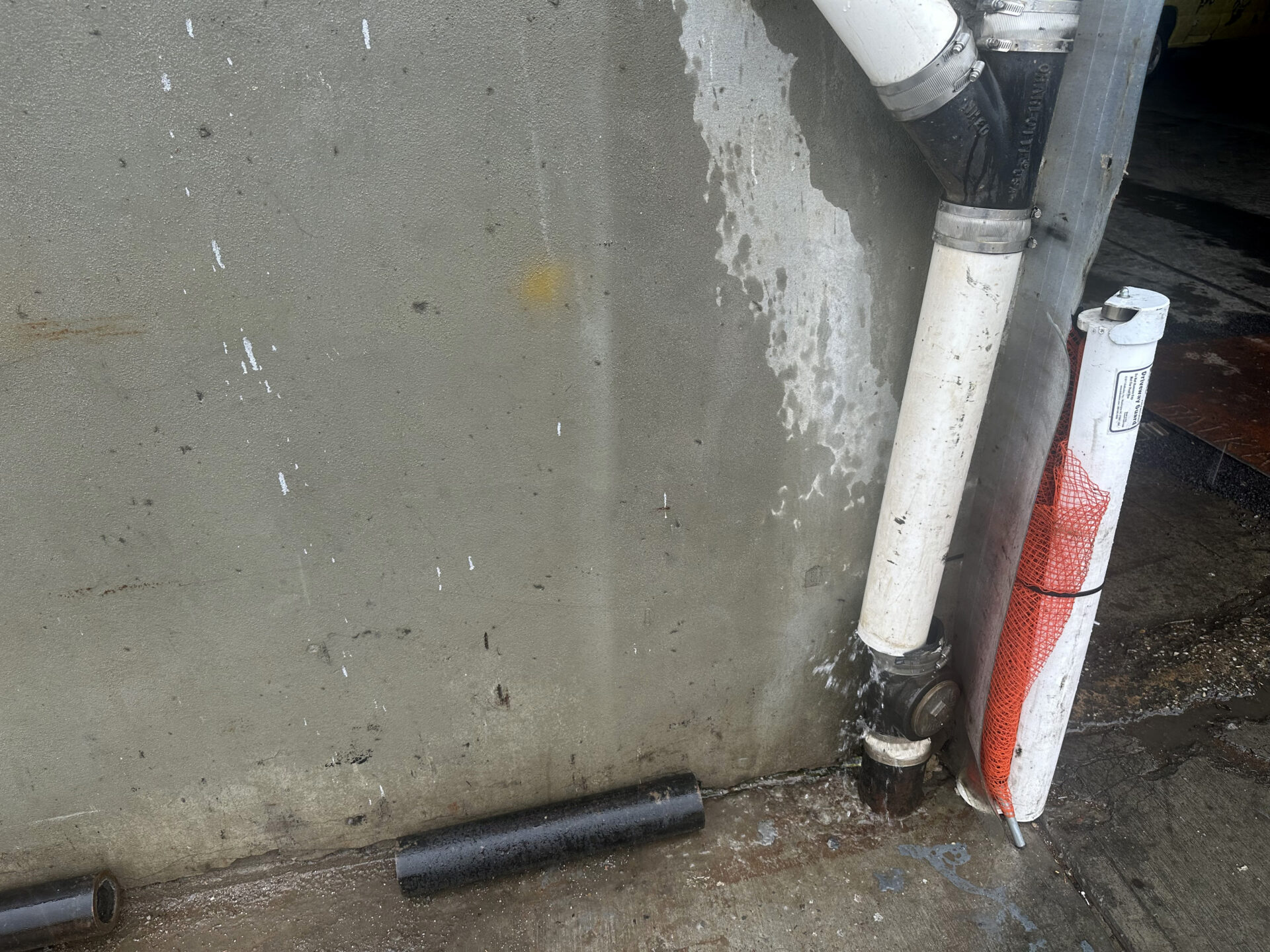
Who Can Repair or Replace a Plumbing Stack Line?
Whether you need a plumbing 0repair or a replacement, Balkan Sewer & Drain Cleaning will be able to help. We have the necessary tools and experience to do the job quickly and correctly. You don’t have to wait until there is a major problem to call Balkan Sewer & Drain Cleaning– you can call us at the first sign of a problem!

